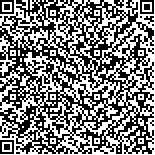付娟娟,王红星,王培,等.胫神经局部振动对脑卒中患者小腿三头肌痉挛的影响及神经生理机制研究[J].中华物理医学与康复杂志,2021,43(5):391-395
扫码阅读全文

|
| 胫神经局部振动对脑卒中患者小腿三头肌痉挛的影响及神经生理机制研究 |
|
| |
| DOI:10.3760/cma.j.issn.0254-1424.2021.05.002 |
| 中文关键词: 局部振动治疗 脑卒中 肌张力 H-反射 F波 |
| 英文关键词: Vibration therapy Stroke Muscular tension H-reflex F waves |
| 基金项目:南京医科大学康达学院基金(KD2018KYJJYB037) |
|
| 摘要点击次数: 5287 |
| 全文下载次数: 8225 |
| 中文摘要: |
| 目的 观察胫神经局部振动治疗对脑卒中患者小腿三头肌痉挛及神经电生理功能的影响。 方法 选取脑卒中后偏瘫下肢功能障碍患者60例,按随机数字表法将其分为治疗组和对照组,每组30例。2组均给予常规康复训练,治疗组在此基础上增加局部振动治疗。治疗前、后,采用改良Ashworth量表(MAS)、Clonus阵挛分级法分别评价2组患者的肌张力和痉挛程度,并对胫神经运动与感觉传导、F波、H反射进行检测。 结果 治疗前,2组患者小腿三头肌MAS、Clonus分级评分、胫神经H反射的H/M比值、Hmax、Hmax刺激强度比较,差异无统计学意义(P>0.05)。与组内治疗前比较,2组患者治疗后上述指标均改善(P<0.05),且治疗组治疗后小腿三头肌MAS[(0.62±0.63)分]、Clonus分级评分[(1.05±1.02)分]、胫神经H反射的H/M比值(0.48±0.28)、Hmax[(3.75±2.09)mV]、Hmax刺激强度[(38.18±12.79)mA]较对照组改善优异,差异有统计学意义(P<0.05)。 结论 在常规康复训练基础上辅以胫神经局部振动治疗,可通过抑制神经反射通路的兴奋性,有效缓解脑卒中患者小腿三头肌的痉挛程度,降低肌肉张力。 |
| 英文摘要: |
| Objective To explore the effect of tibial nerve vibration on triceps surae spasticity in stroke survivors and its electrophysiological mechanism. Methods Thirty stroke survivors with upper limb spasticity were randomly divided into a treatment group and a control group, each of 30. Both groups were given routine rehabilitation training while the treatment group was additionally provided with local vibration of the tibial nerve with an amplitude of 0.3mm at 60Hz. Before and after the treatment, the modified Ashworth scale (MAS) and Clonus grading were used to assess muscle tone and spasticity. Electrophysiological functions were evaluated using the tibial nerve motor and sensory conduction test and F wave and H reflex sensing. Results Before the treatment there were no significant differences between the two groups in their average MAS scores, Clonus grading, maximum H amplitude (Hmax), the ratio of maximum H to maximum M amplitude (H/M) or the intensity of stimulus required to elicit Hmax. After the treatment, however, all of those measurements had improved significantly in both groups with the average improvements in the treatment group significantly greater than those in the control group. Conclusions Local vibration of the tibial nerve combined with traditional rehabilitation is more effective than traditional rehabilitation alone in relieving triceps surae spasticity and reducing muscle tone after a stroke. The vibration seems to inhibit excitation of the reflex pathway. |
|
查看全文
查看/发表评论 下载PDF阅读器 |
| 关闭 |